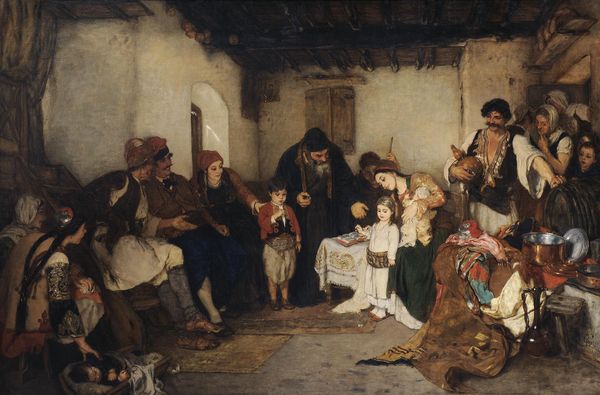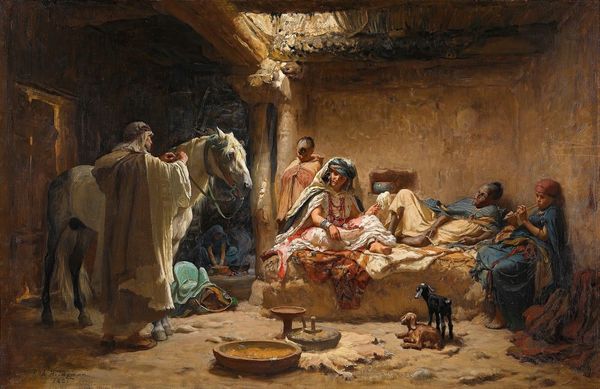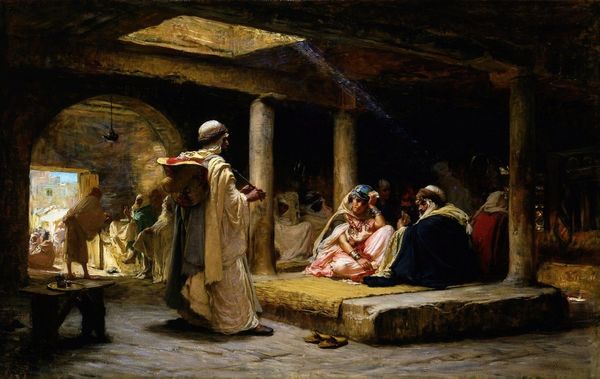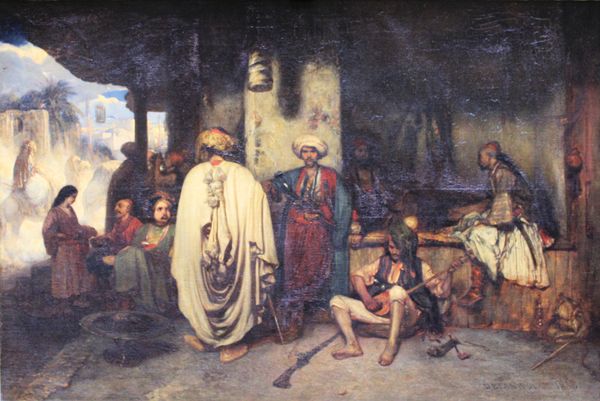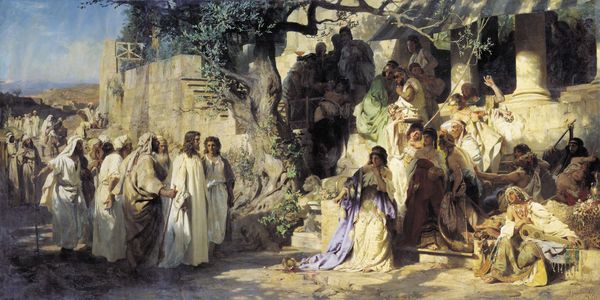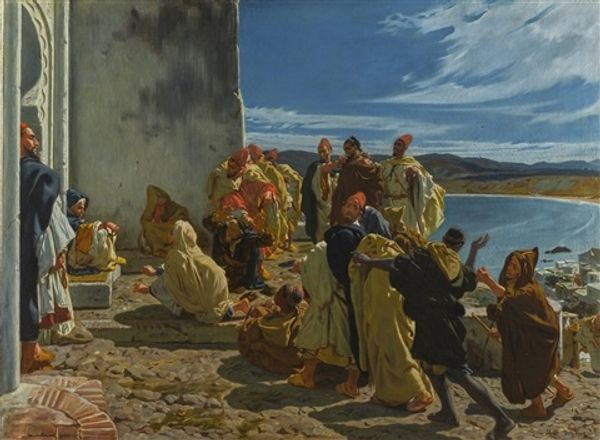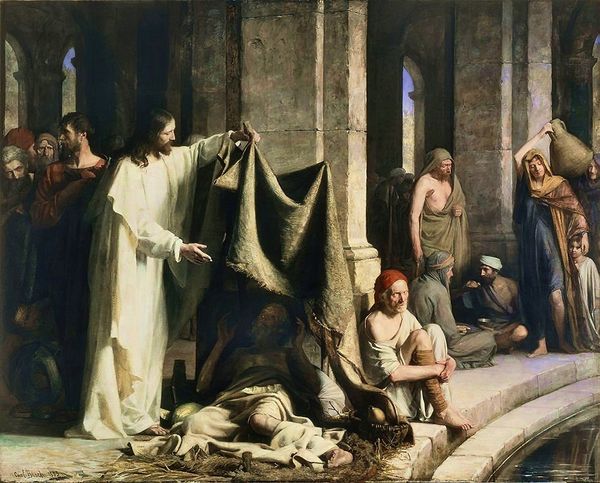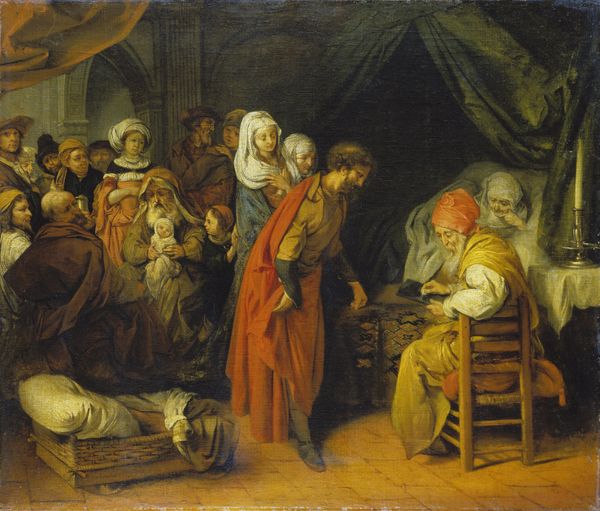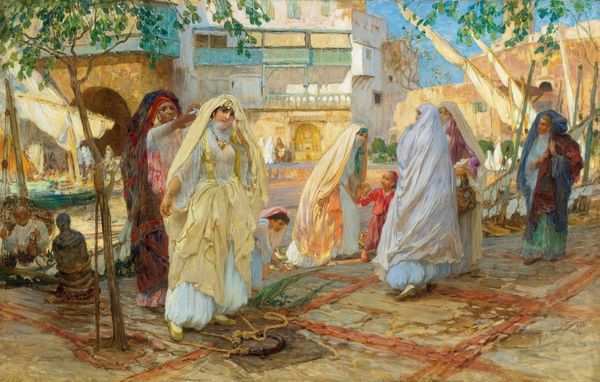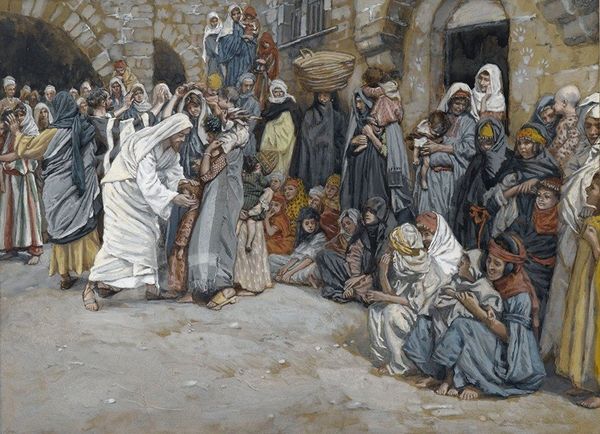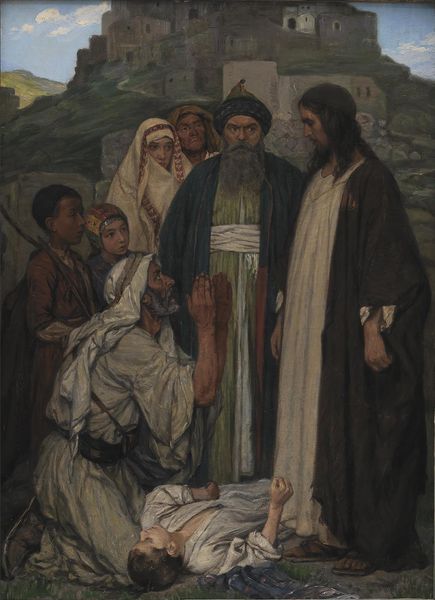
painting, oil-paint
#
portrait
#
narrative-art
#
painting
#
oil-paint
#
oil painting
#
group-portraits
#
romanticism
#
orientalism
#
genre-painting
#
academic-art
Copyright: Public domain
Curator: This is Jean-François Portaels' "The Story Teller in Tétouan," an oil painting that beautifully exemplifies Orientalist themes through genre painting. What strikes you first about it? Editor: It's captivating. The composition seems arranged almost like a theater, with all eyes fixed on the central figure. I wonder about the choice of oil paints. What textures or effects was Portaels trying to capture? Curator: Oil paints offered the ability to render subtle details, which was critical in Orientalist art. Here, notice how Portaels contrasts the vibrant tangerines and the elaborate attire of the storyteller to invite closer consideration of cultural narratives. Tangerines may indicate wealth or the generosity expected of those who tell stories. What do you think? Editor: I'm looking more closely at those clothes now. So much material—that white cloth draped and folded! There's real labor embedded in it. Each fold represents time and a process of production, doesn't it? I’m interested in where and how Portaels accessed the fabrics and the specific pigments he employed to capture their color and texture. Curator: Absolutely. Symbolically, though, white often signifies purity or a rite of passage, relevant when storytelling functions as communal teaching and value transmission, thus becoming its own cultural rite. Notice how almost everyone is dressed in a variation of it, uniting them despite differences in age or position relative to the central orator. Editor: I still can't help thinking about that clothing and those buildings and that basket. Were these material objects readily available for his use? And if not, what assumptions did Portaels bring to them? What kind of access did he really have, when we get down to it? Curator: That's insightful. Portaels could indeed have exoticized what he represented, turning these figures into mere tropes rather than distinct people. But by depicting a scene of concentrated learning, one that likely happened daily, he's capturing a common desire. Editor: I agree that there's a deeper shared context implied by his use of common items, though they might have become mere symbols for those who purchased paintings such as this one in their own locales, so distanced from its place of creation. I hadn't thought of that at all. Curator: Considering Portaels’ background, the ways he depicts clothing and the ways he situates that storyteller seem likely intended to reveal something very precious about that place and moment in time.
Comments
No comments
Be the first to comment and join the conversation on the ultimate creative platform.
